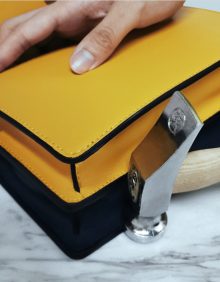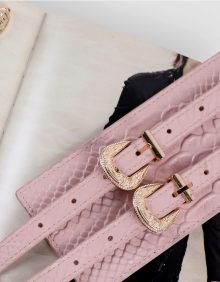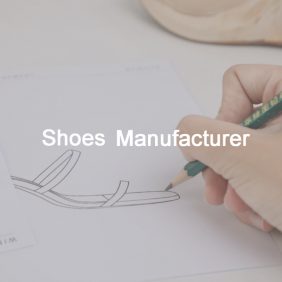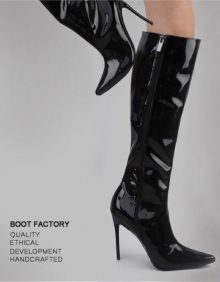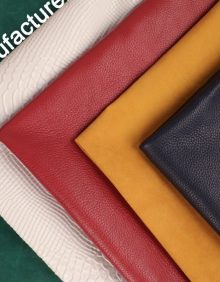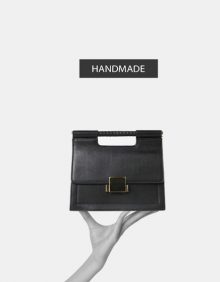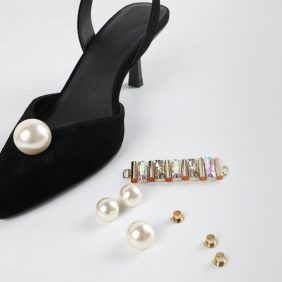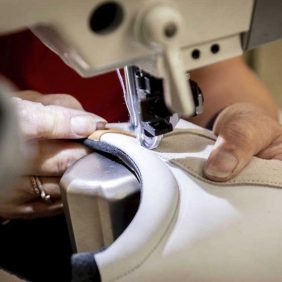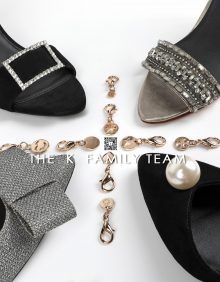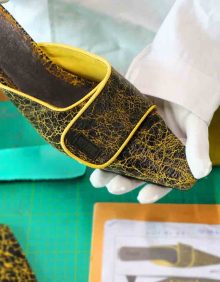THE K FAMILY FACTORY was audited by Sedex Members Ethical Trade Audit (SMETA) ,Sedex Members Ethical Trade Audit (SMETA) is one of the most widely used ethical audit formats in the world. These audits have gained popularity as brands and retailers seek to partner with suppliers that participate in SEDEX to ensure ethical trading and corporate social responsibility.
Production always take place after sales sample. Brand received pre-order from retailer and buyers, then confirm correct production color, size, quantity, production cost and delivery date with shoe factory and release official PO, factory start production making after PO received and production deposit made.
Quality shoes are made using a nesting manufacturing process, The manufacturing process of making high heel shoes is quite complex and interesting. It involves individual tasks among several departments within the factory.
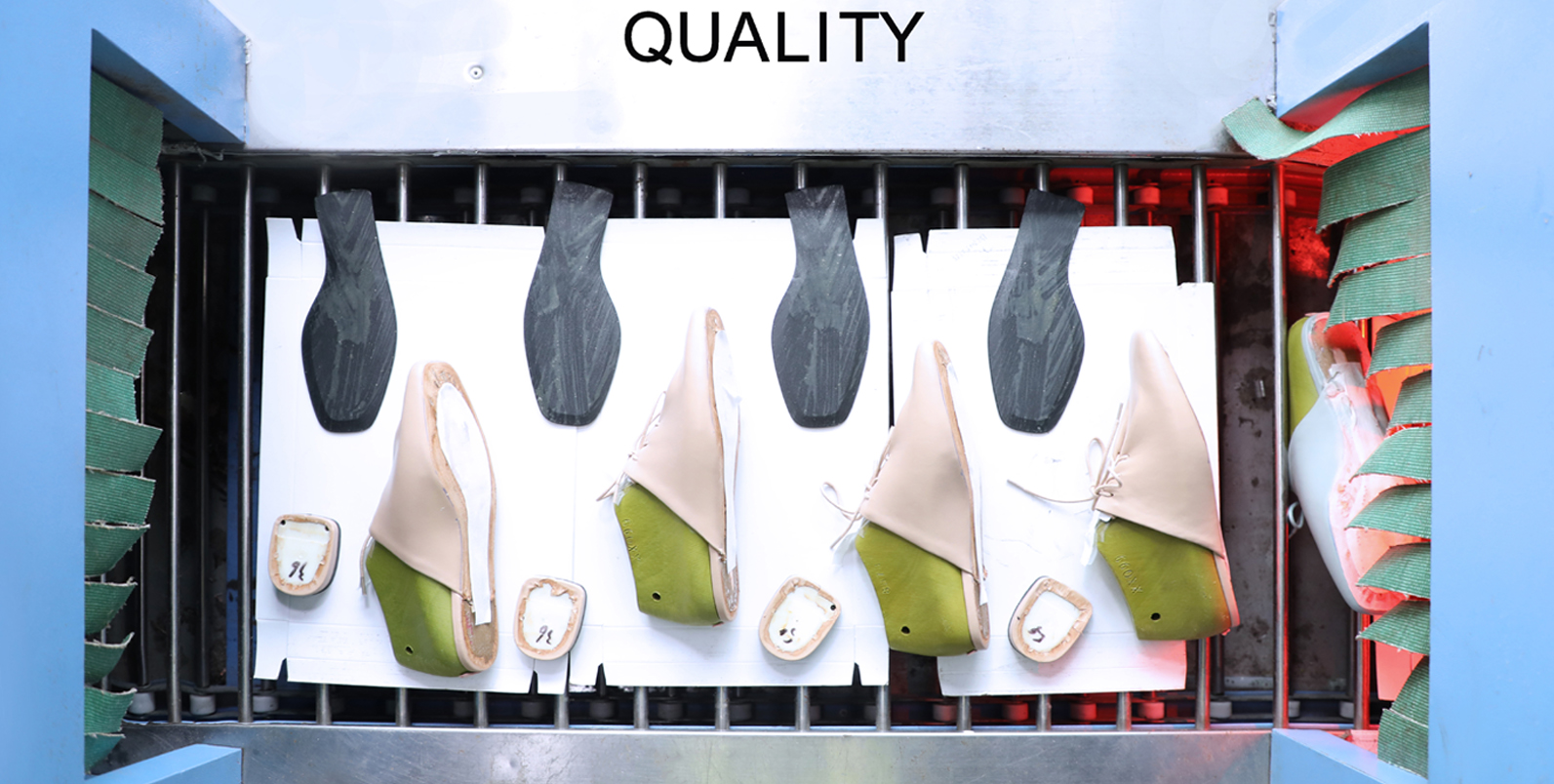

CUTTING MATERIALS
The shoe making process starts with cutting materials. All production materials will be confirmed before production.
Shoe parts are generally hand-cut into different pieces, for some pattern pieces with special shape and details, we often do hand cut on this stage. It depends on shoe design and construction, every part for every size needs its own pattern pieces.
On this stage, material usage and wastage is the most important that need to be controlled, our workers are with decades of cutting experience, they have a good knowledge on how to cut the shoe uppers with the most usage and less waste.
Besides material cutting, some hand-work like skive edges, gauge marking are finished here before moving to stitching department.
Shoe technology like print, stamp or embroidery are made after shoe cutting finished.
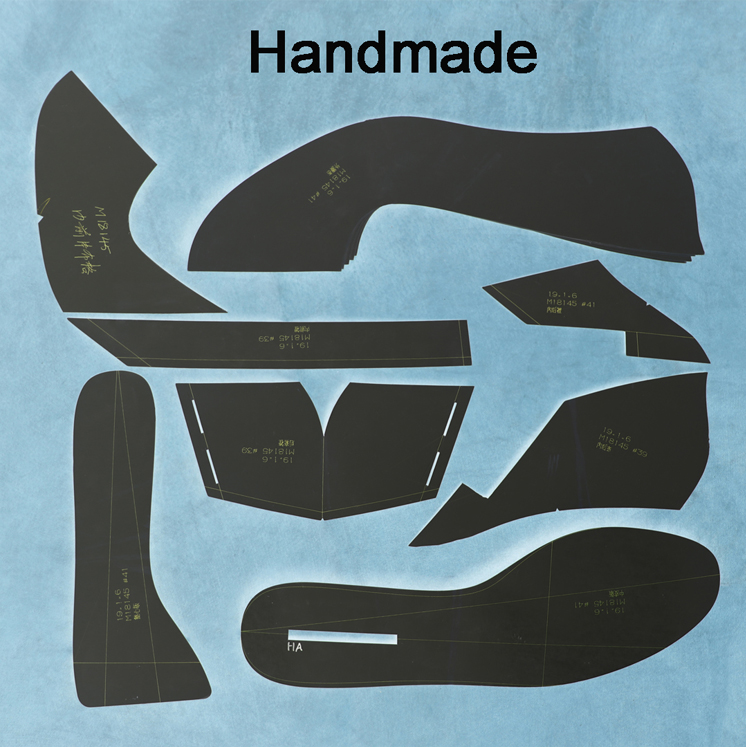

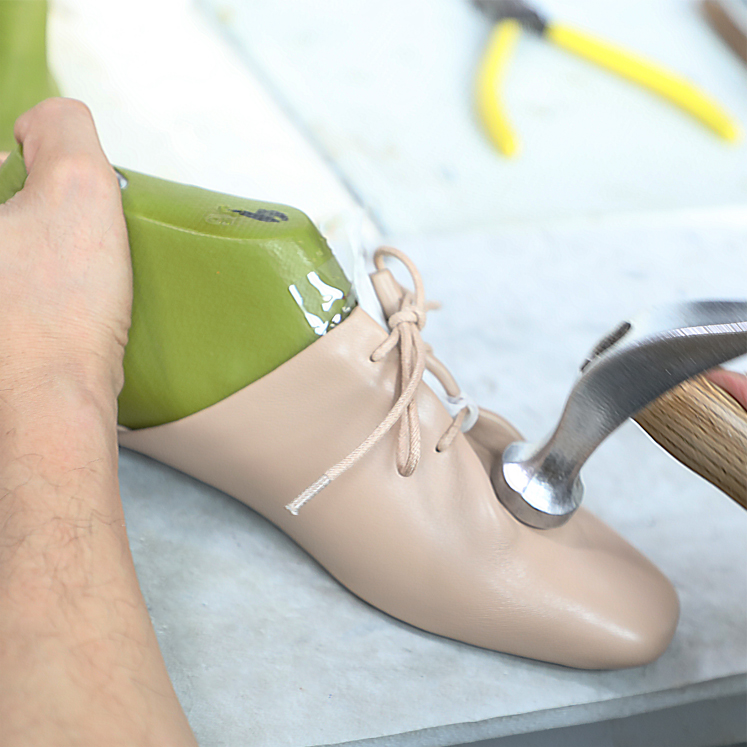

Stitching shoe uppers
Once the shoe parts are cut, the stitching department takes over.
In the stitching department, the operations are divided into simple steps, leather pieces are stitched together. First the upper, then the lining. The toe and back heel is reinforced with a toe cap and counter.
To prevent the leather pieces off position during operation, Stitching workers usually attach one to one another at the edges with glue. First, the upper is stitched together, followed by the lining. After both upper and lining have been stitched together, the seams are neatened and loose thread are trimmed.
To make shape on the shoes, a counter is added between the upper and lining at the heel, and a toe cap is added at the tip of the shoe. Finally, the stitching stage is completed with the shoe size marked and move to next stage.
Lasting and assembly
This stage is to attach sole to finished upper and fix the heel on shoe, then a complete shoe finished.
When shoe upper finished, the upper is drawn into a shoe lasts, upper will fit tightly over the last for shaping. High heels are made in three separate sections—the upper, the sole, and the heel. Strong cement is used to bond the upper and sole together, and they will be put in a press for approximately 12 seconds to press the for a better bonding so that the upper and sole won’t peel off.
The heel itself will be attached to sole and screw it on shoe using nails, screw nails, tacks, or sets of molded prongs (or some combination), depending on the style and construction of shoes.
After heel screwed on shoe, the sock with sponge will be insert inside of shoe, glue it and attach firmly. The sock will cover the area which screw the heel and it is for a more comfortable fitting.
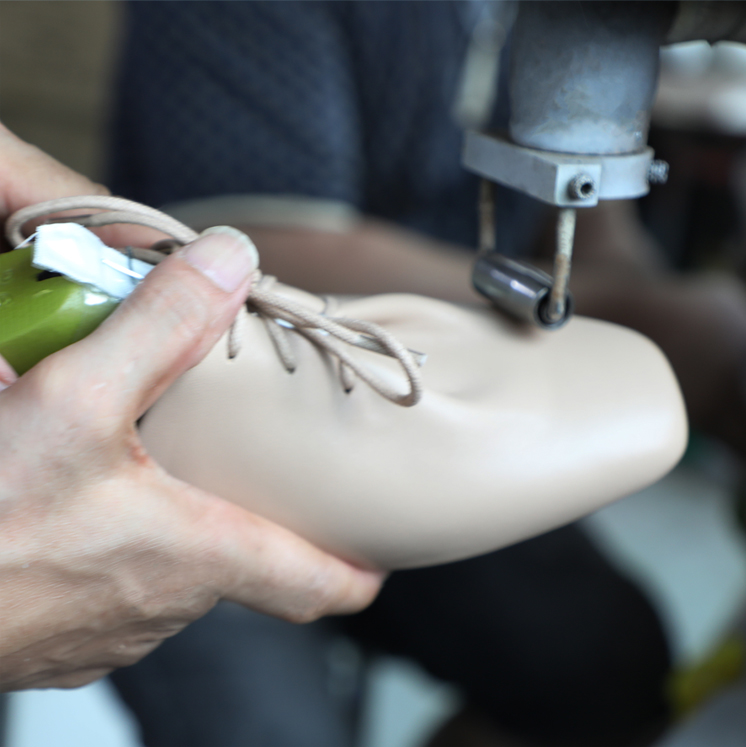



QUALITY CONTROL
When a complete shoe finished, it will be cleaned and match in pair, then ready for inspection.
Quality control is a process which customers seek to ensure that product quality is maintained or improved. K SHOES FMAILY FACTORY QC team will do quality control for all products made, some of our clients will assign a third-party for final inspection after production ready.
Quality control help you determine the overall quality of your order, and determine the need to issue corrective actions before any products leave the factory. It also minimizes the amount of costly product defects. Inspections can detect merchandise containing non-standard or non-compliant components.


K SHOES FAMILY FACTORY team recommends the International Inspection Standard to determine the number of units that will be randomly selected for evaluation. Shoes are checked against a detailed inspection plan for appearance, applicable functionality, packaging integrity, workmanship, and your specific requirements. Discovered defects are classified as major, minor, or critical depending on inspection plans. If you have your QC standard and procedure, we will concern to follow your documentation.
And there are several types of inspections available throughout the production process. In-Process and Pre-Shipment inspections. As one of the longest serving inspection companies in Asia, one of our Inspection Manager are very capable to help choose the best source inspection service to fit your requirements.


